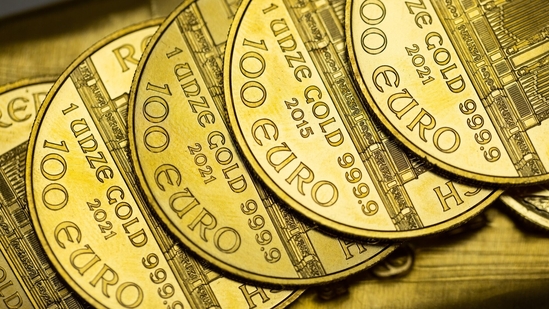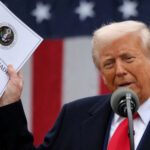Following record highs earlier this week, gold prices fell back somewhat as global markets adapted to the effects of former U.S. President Donald Trump’s latest “Liberation Day” tariffs. The commodity, a long-time safe-haven investment during periods of geopolitical and economic unrest, first shot up following the announcement but has since fallen back somewhat as investors adjust.

Gold Hits Record, Then Drops
Gold touched a record on April 1 as investors fretted over a possible trade war and the consequent market turbulence induced by Trump’s retaliatory tariff policy. By April 2, however, the price corrected slightly as the initial shock started to abate and profit-taking set in.
In overseas markets, spot gold hit a high of nearly $2,265 per ounce before dropping marginally. In India, the prices of gold rose to more than ₹68,000 per 10 grams at the high but have corrected slightly in key trading centers such as Delhi and Mumbai.
Trump’s Tariff Move Sparks Global Reactions
The gold rush was an immediate response to Trump’s threat of retaliatory tariffs—meant to level the playing field by matching other countries’ tariffs on U.S. exports. The policy, referred to as “Liberation Day tariffs,” raised alarm over increasing global trade tensions, particularly between the U.S., China, and India.
When things are this uncertain, investors will generally shift into safer assets, and gold is always a fall-back option. Analysts explain the initial spike as being spurred by institutional investors hedging their bets against market volatility and currency fluctuations.
What’s Driving the Retreat?
The price decline occurs as the market absorbs the wider implications of the tariff policy. Some investors are taking profits on short-term gains, while others expect possible stabilization in the global economic situation if diplomatic talks follow the imposition of tariffs.
Besides that, dollar strength and a modest increase in Treasury yields also helped cause the decline in gold prices. Generally, a stronger dollar increases the price of gold for foreign consumers, reducing demand somewhat.
Analysts forecast long-term strengthening
In spite of the recent pullback, market analysts are still optimistic about gold in the mid to long term. The ongoing uncertainty regarding tariffs, inflation fears, and possible central bank rate moves continue to propel the metal’s upward journey.
“Gold is performing as expected—serving as a shock absorber during market shocks,” said a commodities analyst at a top financial firm. “Though we are likely to witness minor corrections, overall trends indicate gold will still be robust in 2025.”
Investment Interest Grows
Interest from the retail and institutional side for gold keeps pouring in, with gold ETFs recording a big surge in inflows in recent days. Demand from jewelry is also firm, particularly with the approaching festive season in India.








